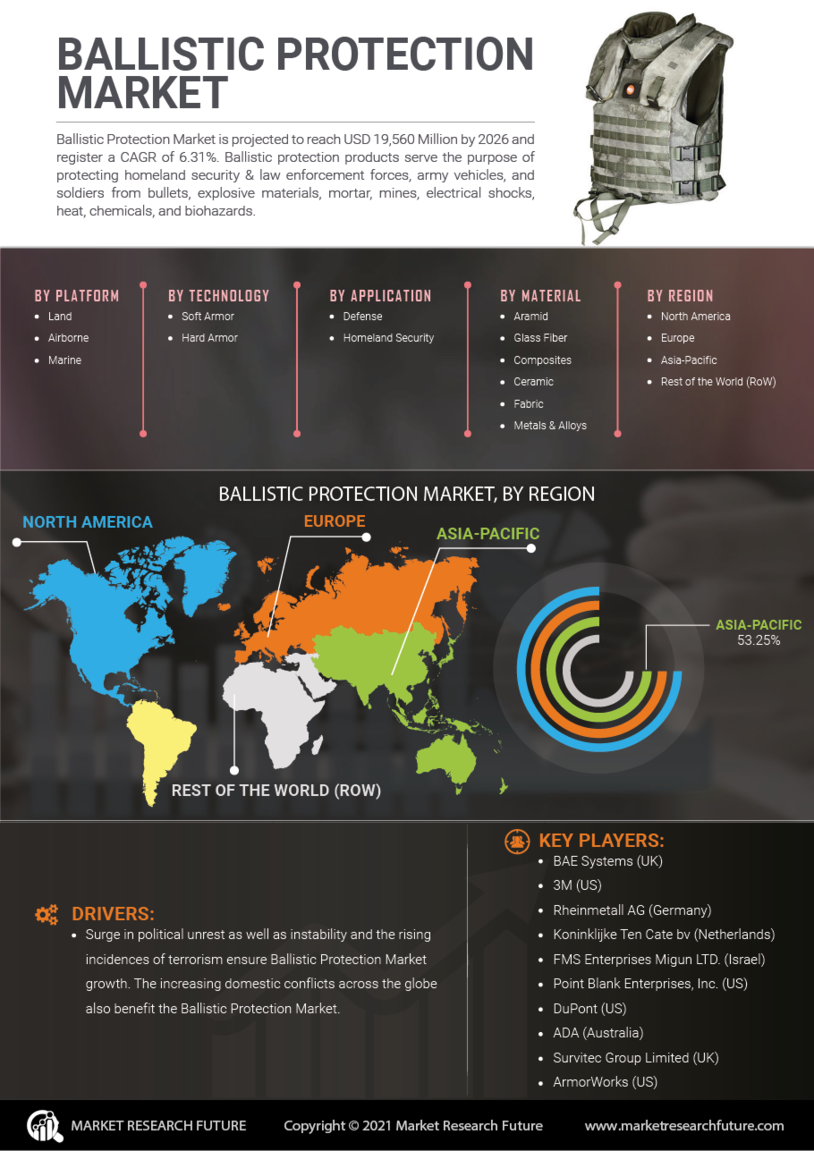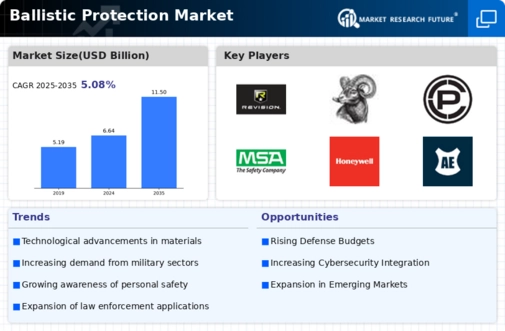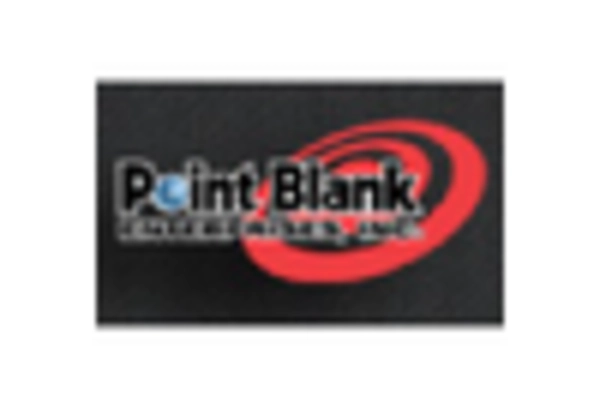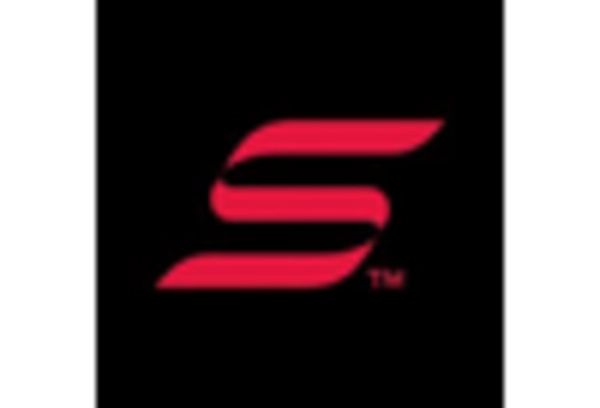Rising Geopolitical Tensions
The Ballistic Protection Market appears to be influenced by escalating geopolitical tensions across various regions. Nations are increasingly investing in defense capabilities, which includes enhancing personal and vehicle protection against ballistic threats. This trend is evidenced by a reported increase in military budgets, with many countries allocating substantial resources to procure advanced ballistic protection gear. For instance, defense spending in certain regions has seen a rise of approximately 5% annually, reflecting a growing emphasis on national security. As a result, manufacturers in the Ballistic Protection Market are likely to experience heightened demand for their products, particularly in conflict-prone areas where the risk of armed confrontations is elevated.
Government Procurement Initiatives
Government procurement initiatives are playing a crucial role in shaping the Ballistic Protection Market. Many governments are implementing programs aimed at modernizing their defense and law enforcement agencies, which includes the acquisition of advanced ballistic protection equipment. For example, recent contracts awarded to manufacturers for supplying body armor and armored vehicles indicate a robust pipeline of demand. The market is expected to benefit from these initiatives, with projections suggesting that government contracts could represent over 40% of total market sales in the coming years. This trend underscores the importance of strategic partnerships between manufacturers and government entities within the Ballistic Protection Market.
Increased Focus on Civilian Safety
The Ballistic Protection Market is experiencing a notable shift towards civilian safety measures. With rising concerns over mass shootings and terrorist attacks, there is a growing demand for ballistic protection solutions among civilians. This trend is reflected in the increasing sales of personal protective equipment, such as bulletproof backpacks and vests designed for everyday use. Market data indicates that the civilian segment of the ballistic protection market could account for a significant share, potentially reaching 30% of total market revenue by 2026. As awareness of personal safety continues to rise, manufacturers in the Ballistic Protection Market are likely to expand their product offerings to cater to this emerging consumer base.
Growing Awareness of Personal Security
The Ballistic Protection Market is witnessing a surge in awareness regarding personal security among individuals and organizations. As threats to safety become more pronounced, there is an increasing recognition of the need for protective gear. This awareness is driving demand for ballistic protection products across various sectors, including corporate security and educational institutions. Market analysis suggests that the demand for protective equipment in these sectors could grow by approximately 7% annually. Consequently, manufacturers in the Ballistic Protection Market are likely to focus on marketing strategies that emphasize the importance of personal safety, thereby expanding their customer base and enhancing market penetration.
Technological Innovations in Ballistic Materials
Technological advancements in materials science are driving the Ballistic Protection Market forward. Innovations such as the development of lightweight composite materials and advanced ceramics are enhancing the effectiveness of ballistic vests and shields. These materials not only provide superior protection but also improve comfort and mobility for users. The market for ballistic helmets, for instance, is projected to grow significantly, with estimates suggesting a compound annual growth rate of around 6% over the next five years. As manufacturers continue to invest in research and development, the Ballistic Protection Market is likely to witness the introduction of next-generation products that meet the evolving needs of military and law enforcement agencies.


















Leave a Comment